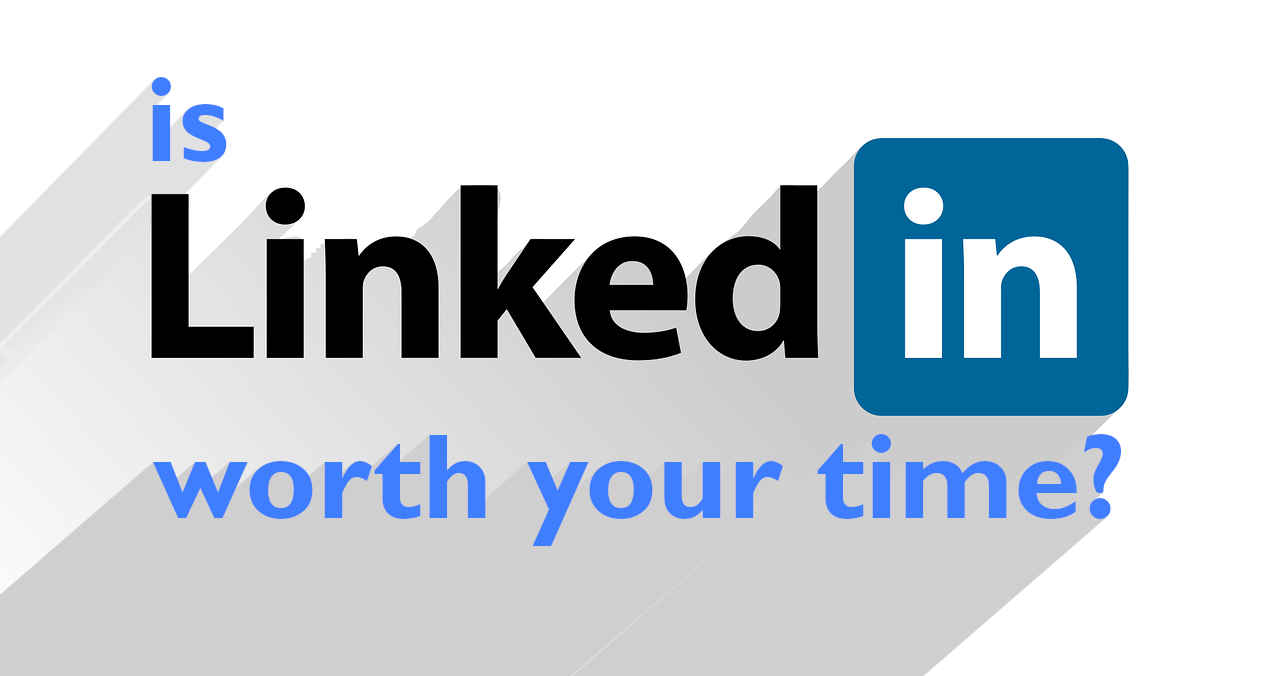Is LinkedIn Worth Your Time as a Salesperson?
Unless you have a solid, surgical LinkedIn sales strategy, you’re probably wasting your time.
LinkedIn can be a valuable resource for a salesperson, but it must be approached tactically. If you’re spending over an hour a day on LinkedIn, you’re doing it wrong.
We’re going to walk you through the most effective sales strategies on LinkedIn, including how to gather leads, what subscriptions are worth the money, the content you should be outputting, and how to measure the efficacy of your posts.
LinkedIn is great for prospecting, not pitching
Trying to pitch a product or close deals over LinkedIn is generally a waste of time. What isn’t a waste of time is finding leads using targeted searches and information from their profiles and feeds.
One of the primary benefits of social media is the unfiltered access you have to potentially anyone in your industry. No need for conventions and glad-handing when you can just look up prospects and see who all of their friends and contacts are. You can like their posts, comment on their content, and provide your own content for them to interact with.
But a hard pitch or a blind DM is not advisable.
Find and filter leads to speed up prospecting
LinkedIn wants you to find leads — it provides all of the tools a salesperson could need to pare down an audience of almost 700 million users to a manageable cross-section of prospects you have a shot at.
Your first time-saving step will be to get comfortable with LinkedIn’s search and filter features.
Step one: Click on the search bar, type in your query, and pick People, Jobs, or Content. These three options will appear in the dropdown when you click on the bar. Hit enter or click on the magnifying glass to begin your search.
Step two: The search results page will show up. You’ll see additional filters at the top of the page. Click on them to check them out. The filters include the following categories: companies (and pages), content, event, groups, jobs, people, schools, and all.
Step three: For advanced search features, click on “all filters” at the top right after you’ve searched for your term. This will allow you to narrow the scope of your search even further. You can search by title, connections, geographic location, level of employment, tier of connection (1st, 2nd, or 3rd), the schools they attended, and more.
Play with these search filters to save yourself time while prospecting. While it may seem counter-intuitive to master the art of finding fewer people, the prospects you have left after cutting the chaff will be stronger.
Social-selling success comes from building relationships
This soft approach to the online sales process is called “social selling.” Social selling is the practice of using social media to share content and speak with potential leads long before you reach out or make a pitch.
Choose the right content to share on LinkedIn
When we talk about sharing content, we don’t mean advertisements, product images, or brochures. People have become very savvy about advertisements and may even start to assume you’re just an advertising bot instead of a real, live person.
Examples of great content for LinkedIn:
- Advice/blogs from experts in the field in question
- Infographics that make concise and colorful points
- Thought-provoking quotes that start a conversation
- News or recent trends related to the field
- Short, punchy videos
- Podcasts
The content you share should be A) relevant, B) informative, and C) entertaining. People may be hunting for jobs and prospects on LinkedIn, but they’re often just bored and in need of some juicy content.
Share your LinkedIn content where it matters
If you’re looking for prospects in the medical technology field, first use your search filters we talked about above. Connect with those people who fit your criteria, and slip articles about med tech into your feed. But don’t just send out a bunch of invites without context.
“Don’t just hit connect.”
In episode #337 of the Sales Podcast with Wes Schaeffer, LinkedIn marketing expert Rhonda Sher said: “You don’t want to just send invitation to people that are sales pitches. You want to send a personalized connection request. Don’t just hit connect.” Grab personal details from their profile and find a genuine connection you have with them, a personal interest you share, or even just a friendly question about something they do.
Also, don’t neglect LinkedIn’s Groups.
Throwing content on your feed is fine, but you should spend the lion’s share of your time in LinkedIn Groups relevant to your industry. There are groups for every possible industry, interest, and job title. Seek these groups out using the search feature, and join any active ones that relate to your field.
Post helpful content there on a regular basis and watch how your network grows.
Interact with your prospects
Carve out some time every day to visit the seeds you’ve planted, so to speak. Have people commented on the article or image you posted? Respond to them, even if it’s just an affirmation like “Oh yeah, I totally agree.” If a potential prospect asks a question on their feed or in a group, you should be the one answering it. Not with “oh, well our product can fix that,” but with actual expert advice, even if the subject isn’t about your business! If you can answer a question about fishing, do it.
Be active, make your prospects feel like you’re listening to them and that interacting with you is worth it. Plus, seeing a notification on social media literally releases dopamine, an addictive feel-good chemical generated by the reward center of the brain.
You want you, your brand, and your future relationship with the prospect to be associated with that burst of feel-good juice they get from interacting with you.
Lastly, spruce up your LinkedIn profile
Your profile is the first hook a potential lead might nibble on: don’t neglect it. Your job and title should be up-to-date, and your description should include some element of your current elevator pitch.
This pitch should be short, punchy, and to the point, expressing why your company/service/product is the perfect solution for, well, whatever problem it’s the solution for. People see your profile before connecting — this is the first hurdle, so make it a low one.
Spending more money on LinkedIn isn’t the answer
LinkedIn has plenty of premium tiers that offer more functionality for salespeople, but not all of them are worth the money.
Free Account. This is the most popular account, obviously. It allows you to look at user profiles, post content, connect with other users, get alerts on three weekly searches, use recommendations, and receive unlimited messages. For salespeople, there’s really nothing wrong with the free version. It may require a little more legwork to find prospects, but it’s doable.
Premium Career. This account is optimized for getting hired, and there’s no need for a salesperson to grab this unless they’re on the hunt for a new gig.
Premium Business. This subscription gives you access to more business insight (data) and unlimited search results. It also includes the ability to see everyone who’s viewed your profile in the past 90 days, which is a great way to keep tabs on who might be considering reaching out to you. It also increases how many direct messages you can send to other members per month and allows you to send messages to people you aren’t connected to yet.
This usually costs around $40 a month and makes an excellent starting place for salespeople interested in exploring the more robust toolsets LinkedIn provides.
Recruiter Lite. This tier is for recruiters (obviously), but it does have benefits salespeople could leverage. It adds 20 search filters to the standard complement, increases search to 3rd-degree connections, and bumps up the maximum InMails (LinkedIn private messages) you’re allowed to send to 30 a month. However, at $140 a month, it may not be the right choice for most sales applications.
Sales Navigator Professional. Navigator isn’t too expensive, starting at $65 a month for individuals and rising for a Team or Enterprise license — of course, there’s nothing stopping a small team from sharing a single account. Navigator is somewhat controversial for salespeople: some swear by it; others think it’s great for recruiting; some think it’s a complete waste of money. The search tool is heavily expanded from the free option, adding over 30 filters that allow you to basically find and connect with anyone on the site.
The Sales Insights functionality is super-handy for keeping track of how your posts are performing, and expanded notifications can be customized to send alerts when prospects post, comment, change job titles, or get hired somewhere else.
For the price and the expanded features, Sales Navigator is a solid recommendation for lead generation on LinkedIn.
Don’t (only) trust your instincts
All of these LinkedIn strategies can find you prospects and maximize the time you’re spending on the service. However, don’t just rely on your gut to tell if your strategies are working or not. Always consult the data.
You shouldn’t be guessing if your posts and messages are working: you need to consult with LinkedIn’s built-in analytics. Frequently. If you don’t, you’ll be wasting time on posts that aren’t getting any traction. To see which posts are getting impressions and interactions (and which ones are dead in the water), check the “Updates” area of your analytics.
Now go and find those prospects, share that content, and build those relationships. You never know when you’ll get the opportunity to sweep right in, save the day, and convert a potential lead into a long-time customer (and even a friend!).
Latest posts by David Candelas (see all)
- Use a SMART Goal Template to Hack Your Productivity - December 11, 2020
- Is LinkedIn Worth Your Time as a Salesperson? - November 24, 2020
- Tips for Starting the Home Office of Your Dreams - November 29, 2019


